It seemed like an odd start to a gourmet food tour.
We met in front of a Michelin starred restaurant – one of only two in the city of Prague – where our guide for the evening waxed poetic about the marvelous things the young chef of Le Degustation was extracting from traditional Czech cuisine. My mouth was already watering. He then proceeded to direct us across the street to a particularly unpromising looking “pub” with harsh fluorescent lighting, sterile décor, and a mountain of beer mugs covering a stainless worktable.
So much for fine dining.
It turned out that Jan, our Taste of Prague guide, had an agenda beyond merely introducing us to the food and wines of Prague. He was intent on making sure we were left with a taste of the culture, history, and politics of the Czech Republic.
Where Pilsner is King
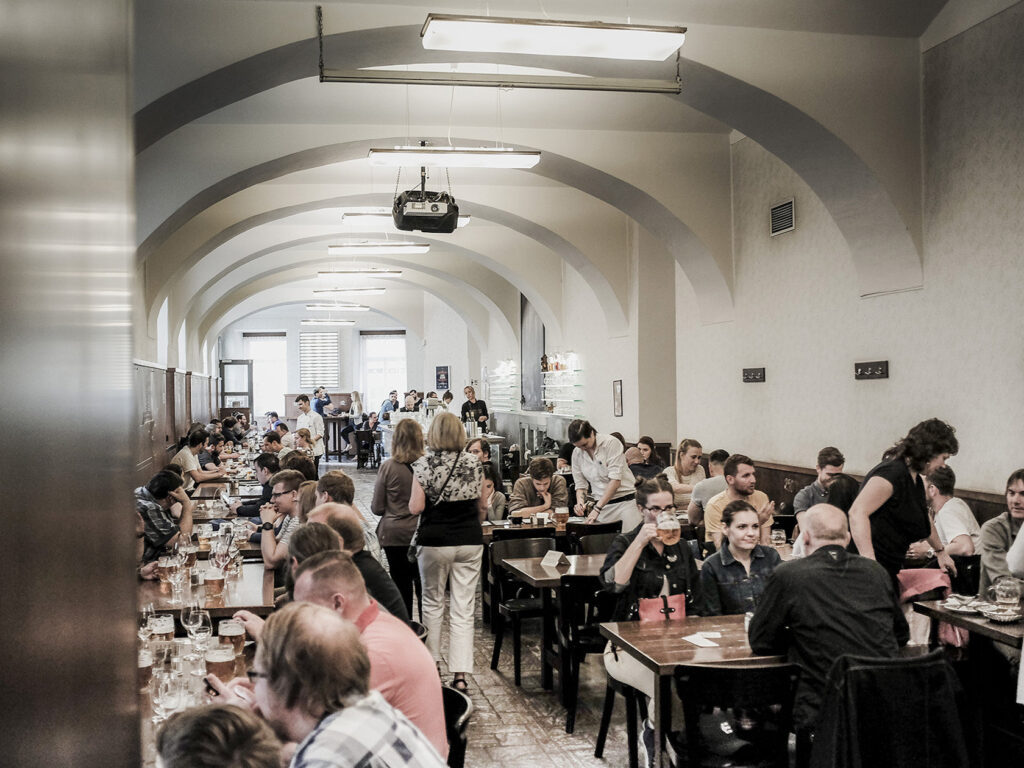
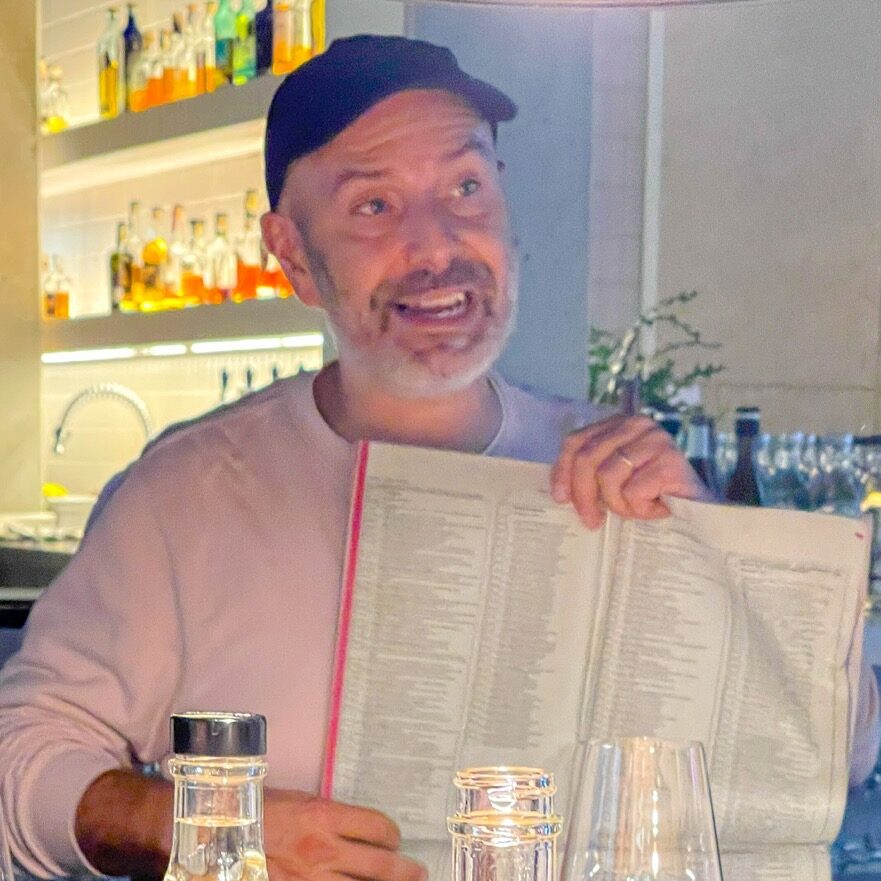
And so, there we were, gathered around a simple utilitarian table, in what turned out to be a replica of a Soviet era pub – a place designed to serve the state approved menu alongside the ubiquitous pilsner that pretty much defines Czechs. This particular Lokál is basically a 240’ long hall lined with tables and stainless-steel tanks all containing one thing: Pilsner Urquell. More than 3,000 beers, with an average of nine mugs per person, according to Jan, are consumed here on a typical day of socializing and dining. The story Jan wanted to tell, however, was about much more than just beer. (Although, in Prague it is hard to find a subject more important than pilsner.)
A Short Lesson on Czech History
Czechoslovakia was under Soviet domination from 1948 to 1989 during which all property and all commercial enterprises were taken over by the state. Absurdly, the Soviets went so far as to standardize all restaurant menus throughout the country. An official cookbook was issued annually for what could be prepared and served in the commissary style diners that were the state approved restaurants for the workers. It was not, apparently, Michelin quality.
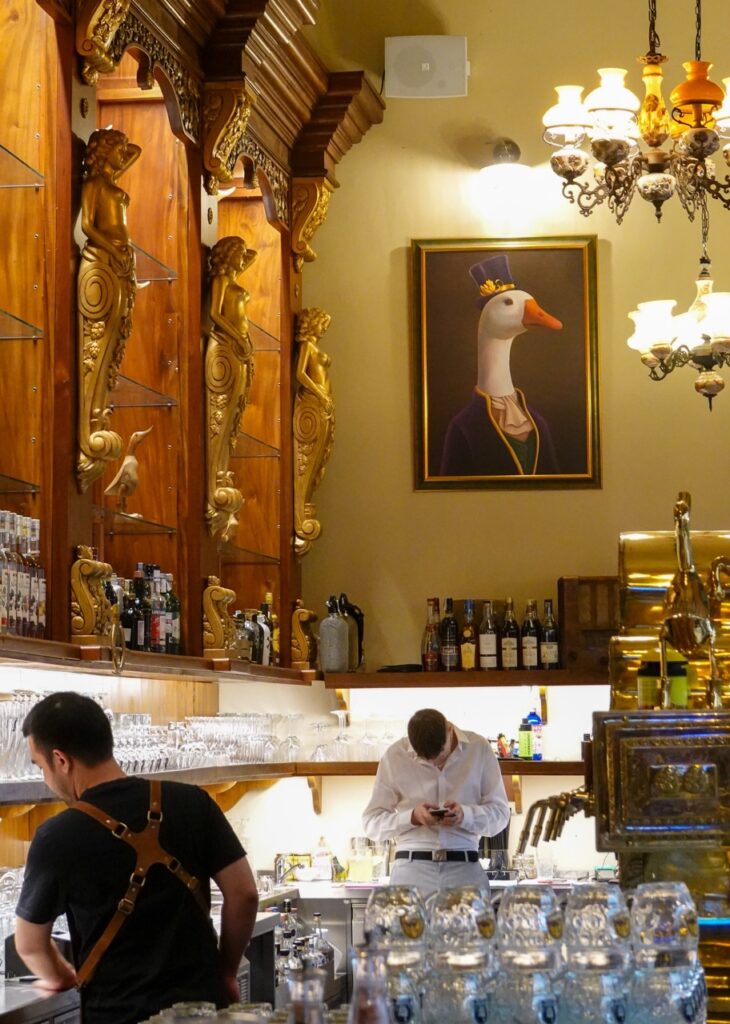
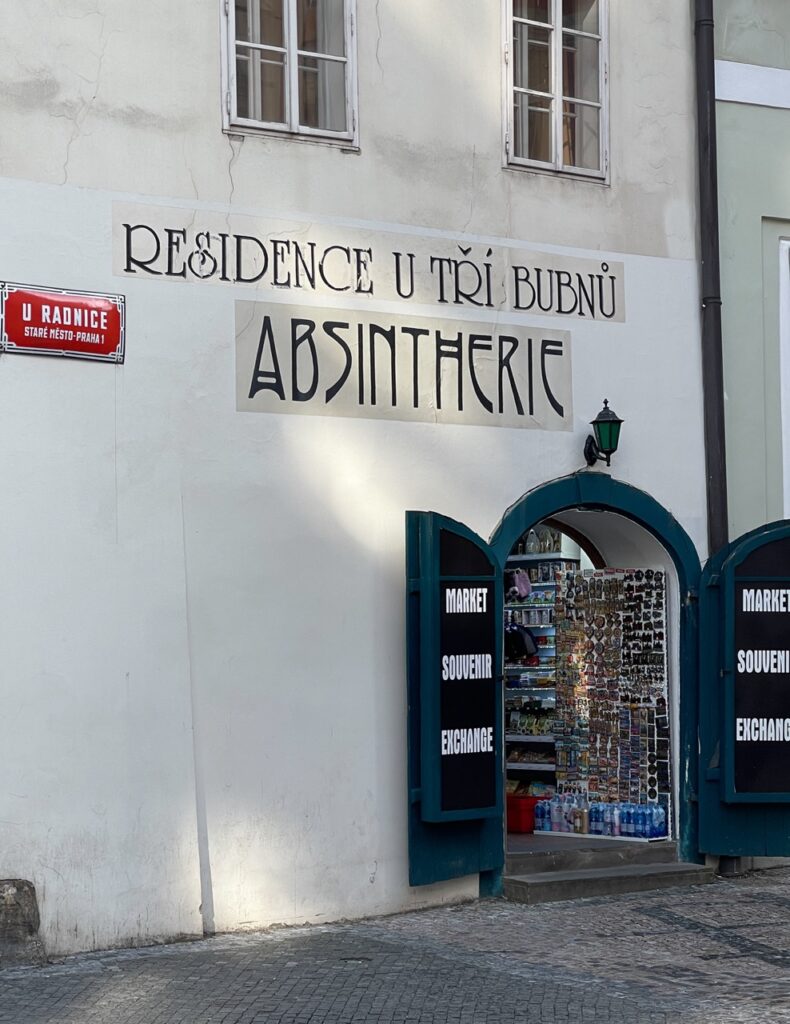
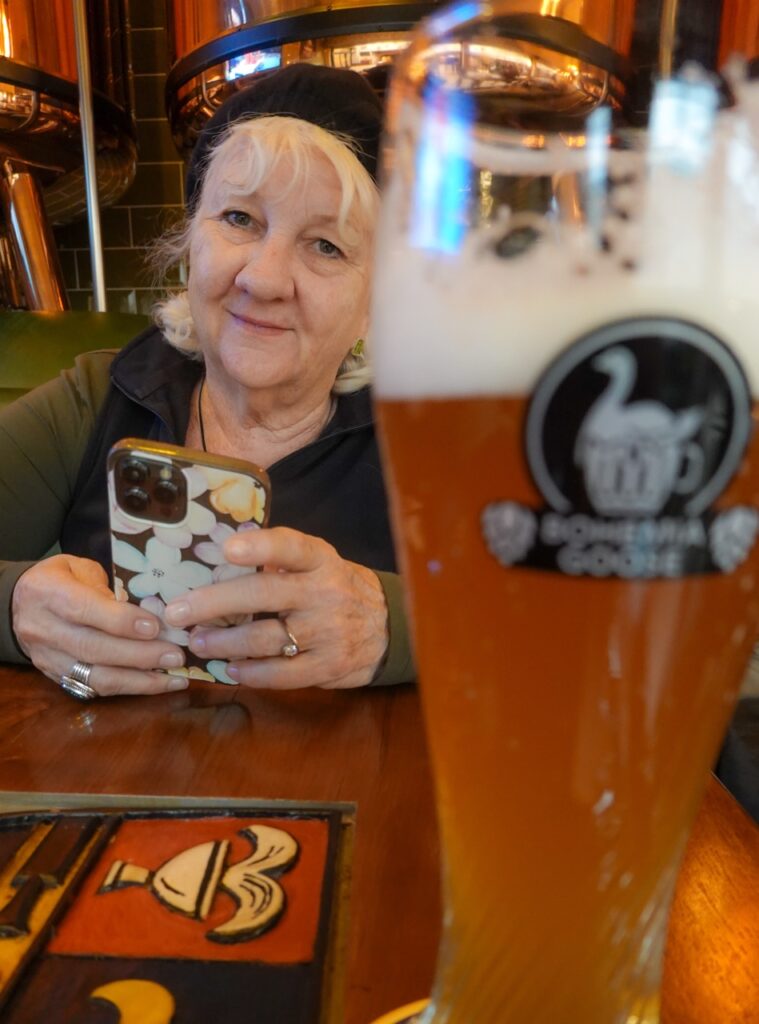
With the success of the “Velvet Revolution” in 1989, the Czechs were once again free to pursue a democratic society, and free elections were successfully held in November of 1990. In this moment, the Czechs embraced the west in every possible way, moving as far as possible from the hated totalitarian state. In the realm of food and dining, that meant creating a new restaurant scene that was at pains not to look or feel anything like the old Soviet diners. That is, until a young entrepreneur said, “Wait a minute, what if those diners had focused on quality, local ingredients? And, what if we add a little beer to the menu?” Apparently, the passage of one generation into the next is enough to create a bit of nostalgia that allows for a pseudo-Soviet ambiance to succeed if the food is great – and it is – and there is plenty of pilsner. It also provides a fitting backdrop for Jan to share his story of life as a citizen of Jewish heritage in Prague.
Castles in the Sky
Without really planning it, we found ourselves in a second former Soviet state just four weeks after visiting Georgia. The universe seems intent on opening our American eyes to the reality of today’s global politics. In fact, the whole notion of a quick jaunt to Czechia’s capital came up through a chance email we received while in Tbilisi. An organization we have been slightly involved with – Democrats Abroad – was holding a fund-raising gala in a palace at the Prague Castle complex. Attendance was merely conditional on a donation to the cause which we were happy to make. Castles? Palaces? Us? Yes!
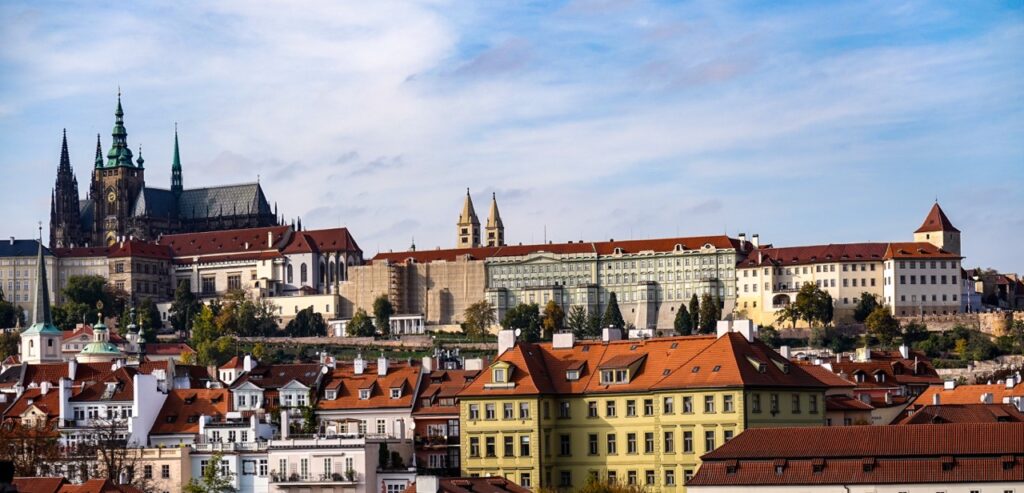
The mansion in question is known as the Lobkowicz Palace and sits at the far end of the massive complex of medieval buildings which has been the seat of power in Bohemia for more than a thousand years. The Castle was begun in the 9th century and today, among many other things, is the home of the president of the Czech Republic. Lobkowicz Palace is unique as it is the only privately owned element of the castle complex. The Lobkowicz’s have been a Bohemian noble family since the 14th century and the palace came into their possession through marriage in the 16th century. They have a heritage.
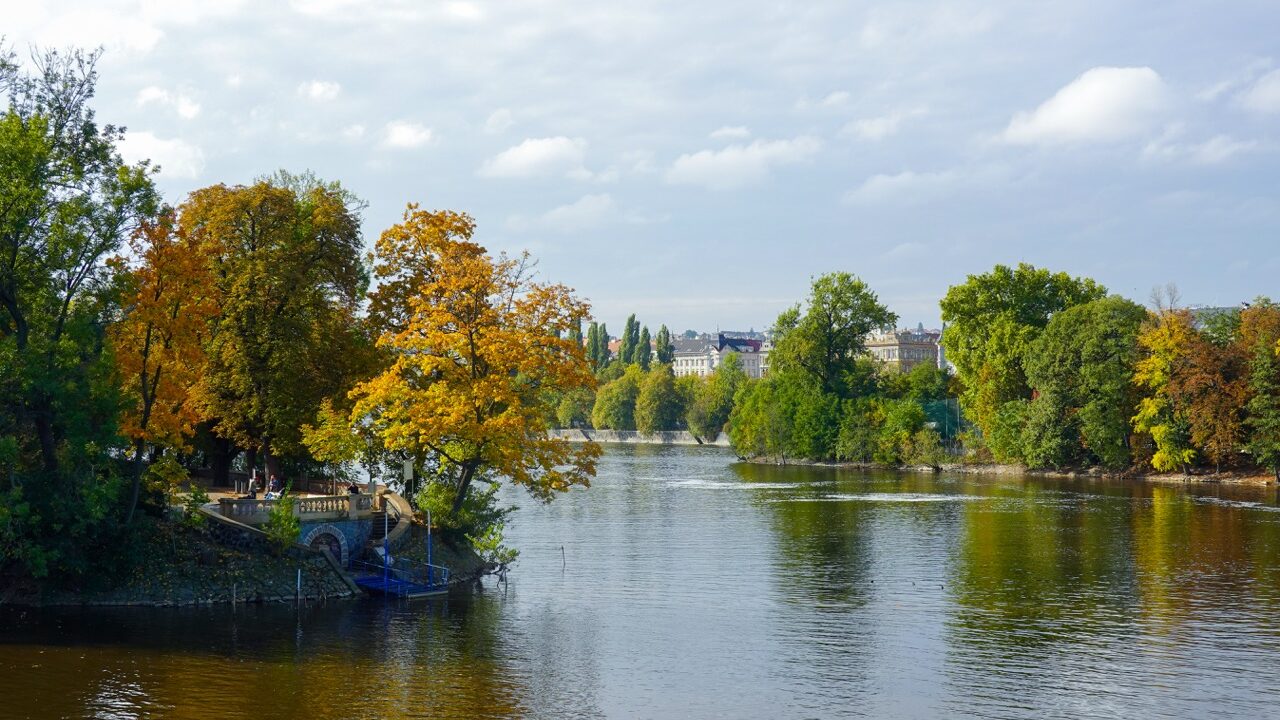
Navigating the titles and connections of European royalty is way beyond my blogger pay grade but suffice it to say that the palace fell to Maximillian Lobkowicz in the early 20th century. He was then forced to watch as the Nazis invaded his homeland in 1939 and confiscated the palace along with the rest of his family’s properties in Bohemia. Maximillian fled to London with his family where he made the gut-wrenching decision to ship his three young sons to America during the German blitz. There, they were adopted and raised by American families in the northeast. In 1945, at the end of the war, Maximillian returned and reclaimed his properties only to have them confiscated once again by Stalin in 1948. Again, the family was exiled, this time escaping to the U.S. with only their basic belongings. When the Velvet Revolution finally took place in 1989, Maximillian’s grandson, William, who was born and raised in Boston, returned to his homeland to claim his heritage. For the next 25 years he worked to put the family legacy back together and opened Lobkowicz Palace to the public as a museum and concert hall in 2007.
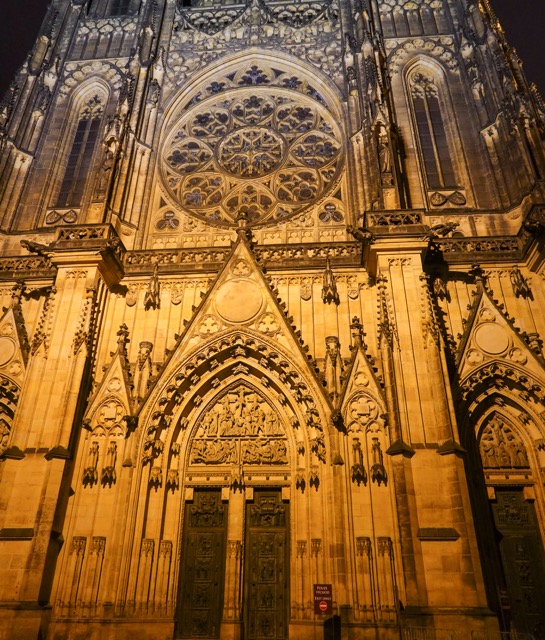
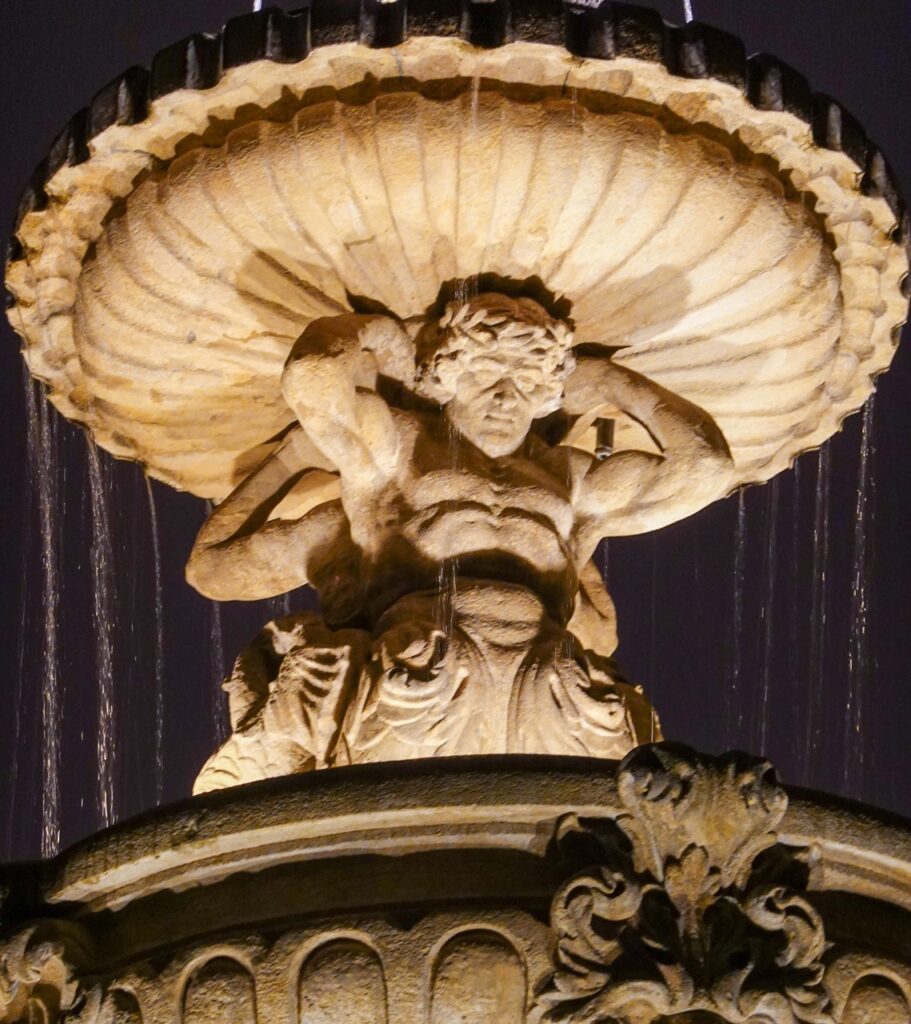
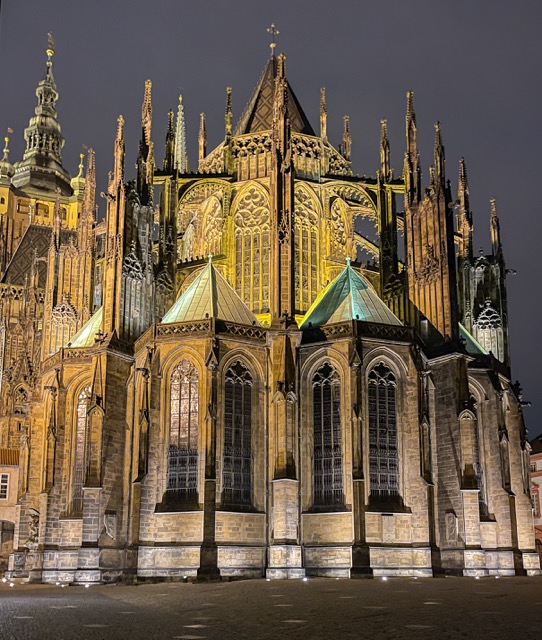
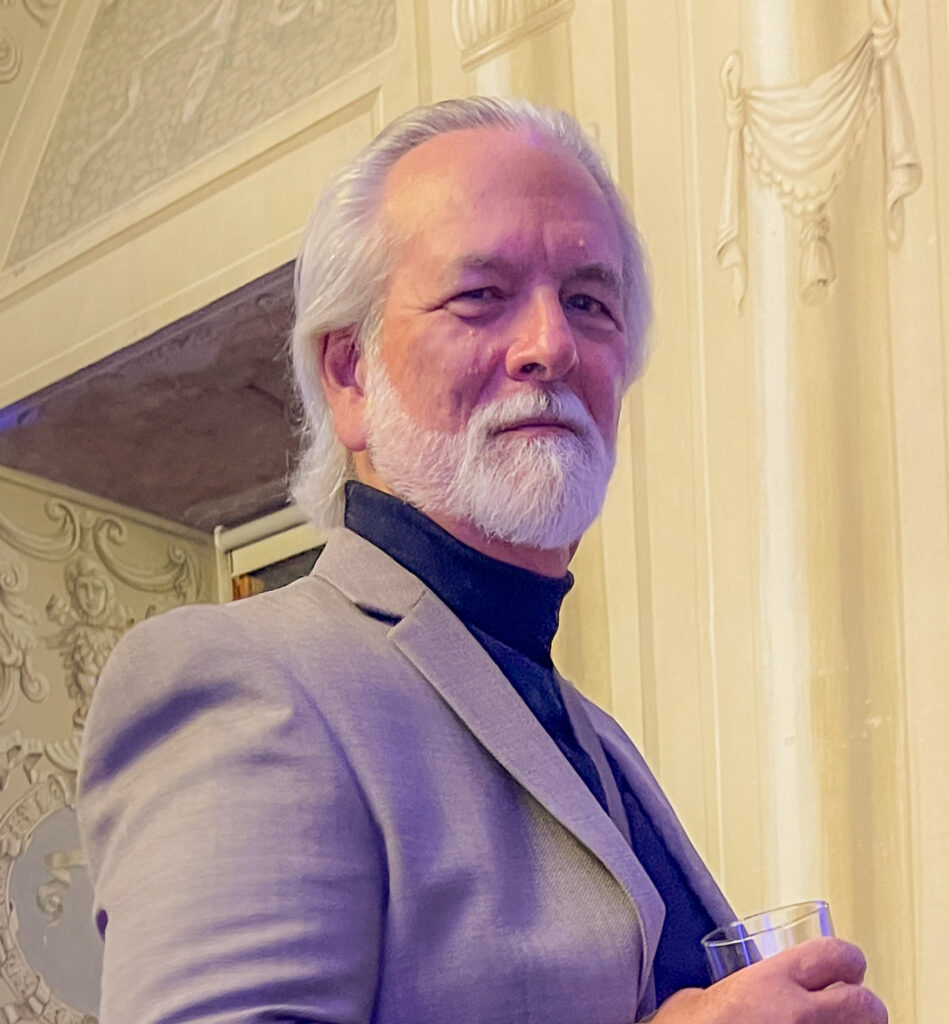
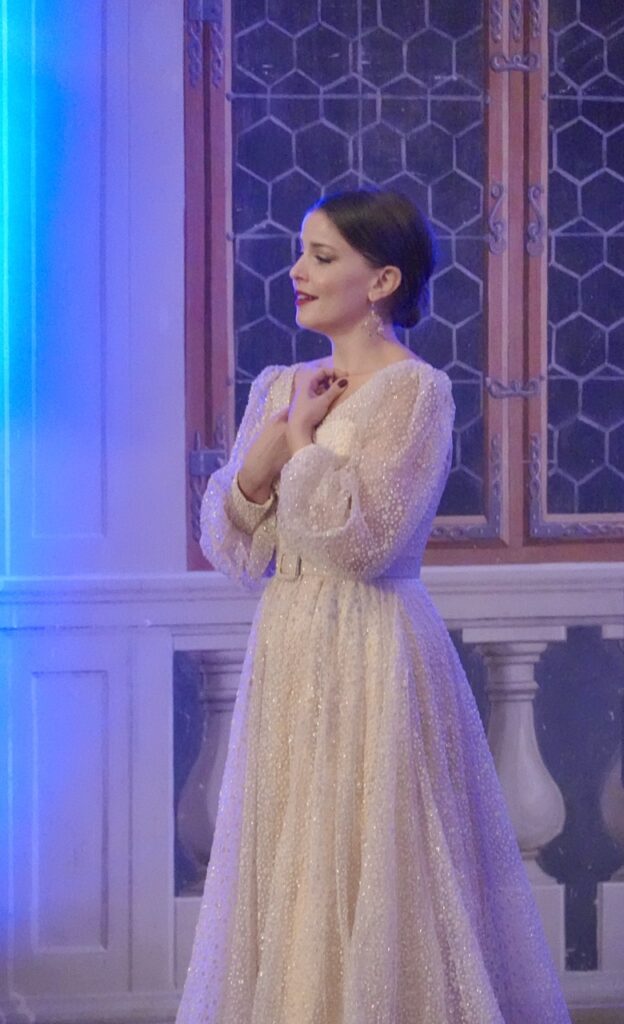
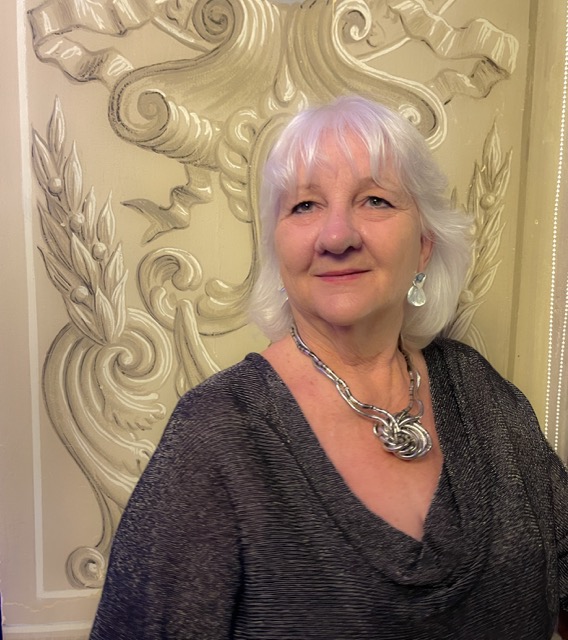
Our evening at the gala was an indulgence that allowed us to play act another existence for a few hours, meet new people, enjoy several live musical performances, and soak up the ambiance of an actual palace. The highlight of the evening for me was listening to Maximillian’s granddaughter recount the family’s long odyssey, including a moving tribute to the America that had defended democracy and adopted her grandfather. What an experience!
Seeing the Sights: Eyes Opened
Wandering about Prague, enjoying amazing fall weather, and gawking at the eclectic architecture, we were continuously amazed by the vibrancy of this culture. We were also regularly reminded by landmarks and monuments of the difficult, tortured history these people have endured. The thread that has tied together our experiences in Georgia with our brief time in Prague is the fragility of the democratic dream, not as a theoretical challenge, but in the real world, with real people and experiences. In Georgia, the people want desperately to be free to elect their leaders and live in a pluralistic society. That dream is being slowly crushed by a billionaire autocrat. In Czechia, the people suffered under the totalitarian Soviet system for 40 years before successfully creating a robust, tolerant, democratic society. We were blessed, in both countries, by the friendship of people, who are, or have been, on the front lines of the struggle.
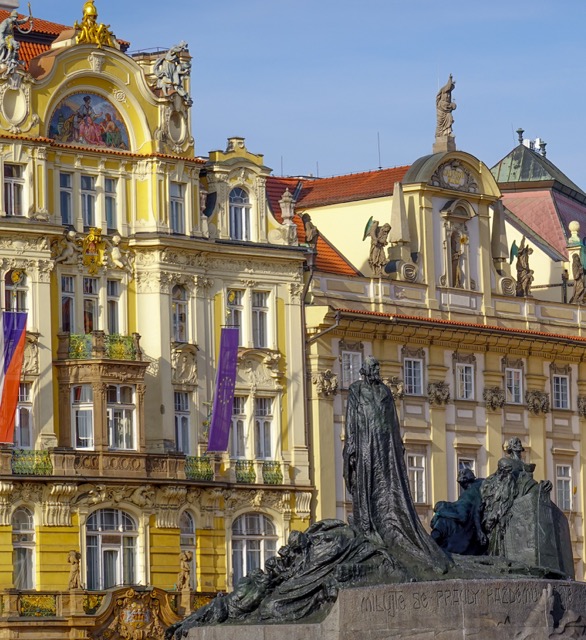
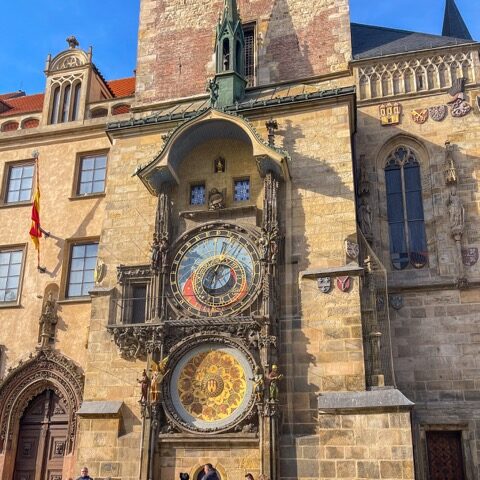
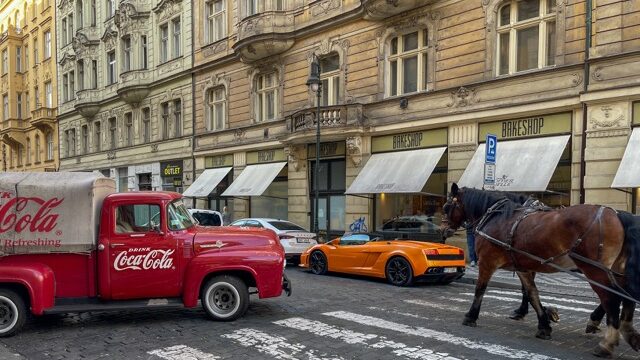
This struggle – between those who desire an inclusive, tolerant culture and those who insist on a single dominant system that excludes all “others” – has been ongoing for many hundreds of years. The amount of slaughter that has been perpetrated in the pursuit of one or the other of these ideals throughout western history is incomprehensible. Putin’s attempts to crush Ukraine’s fledgling democracy is the obvious current example. This fight has been expressed in all the wars between Christians and Muslims, the Napoleonic wars, the World Wars, and of course the Cold War. I fear we are destined to continue this legacy of human suffering and cruelty in the U.S. over the same issue.
An Early Memory
I was still a child when I began asking questions about the conflicting lessons I was being taught between Sunday school and grammar school. If Christ the King was the ideal form of government, why did we support American democracy where the people were the rulers? I could not reconcile these obviously opposing ideas and asking the adults had not produced a satisfying answer. Well, it turns out that support for U.S. democracy was conditional, and today, we are living this conflict: those that believe only a single, all-powerful theocracy will provide the orderly society they crave versus the inclusive, messy, tolerant ideals embodied by democracy.
For a pluralistic society to thrive, there must be a consensus around the benefits and value of the “system” supporting that pluralism. In the U.S. that consensus no longer exists. The MAGA project seeks to replace pluralism with an autocratic regime that does not tolerate dissent. It’s not much different from all the authoritarians that have preceded it. Nearly half of Americans support the MAGA project. Clearly, the consensus has been shattered, no matter the outcome of the 2024 election. America has entered a very dangerous period of struggle between these two competing sets of values – a conflict that has defined the bloody, violent history of western society for a thousand years. The outcome for America is far from certain. Our travels this past year have provided a glimpse of what the struggle may look like and a few of the various outcomes that are possible, some bright, some very dark.
Bonnie and I will always stand for pluralism, democracy, and rule by the people.
Our travels have also shown us that people continue to hope and endure, regardless. So shall we.
About Us
Welcome to our little corner of the world where we invite you to embark on exciting journeys with us!
We’re Ed and Bonnie, a duo passionate about exploring the world and experiencing its wonders. Our love for travel isn’t just about discovering new places; it’s about sharing those moments with cherished family and friends like you.
Our hope is that you will feel like you’re right there with us, sharing in the excitement and wonder of each destination. Better yet, let’s plan a rendezvous somewhere wonderful! Learn more

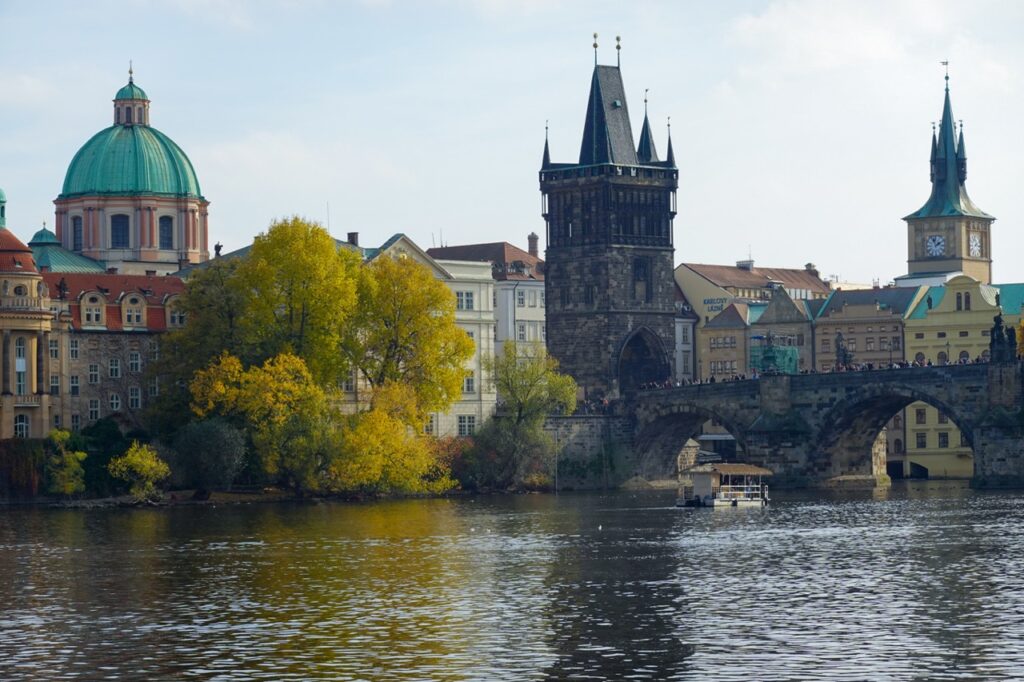
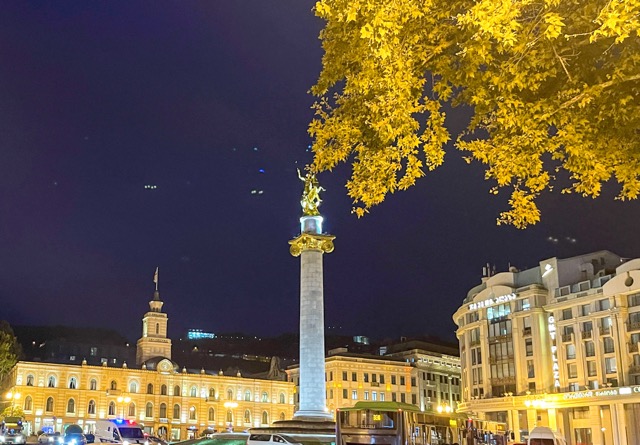
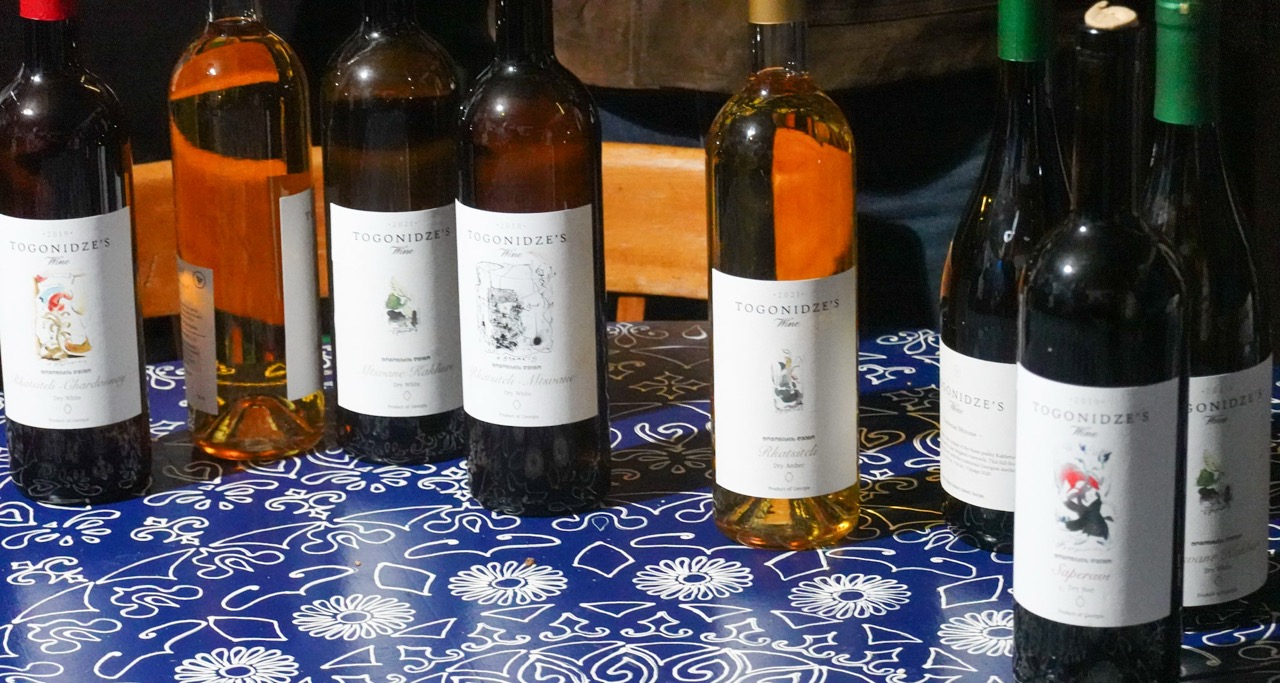
Love this one. What a whirlwind of a trip. I knew you couldn’t stay in Valencia till Thanksgiving 🙂 Can’t wait to hear about the palace party more!
We have shared yourAMAZING Blog with many folks and they all agree that your are providing us with a much needed International perspective as well as a Great Vicarious Adventure! As you can imagine, The last part of this blog touched many hearts and minds, including ours! We believe you have an ever increasing audience for your travels and reflections, and and our English colleagues are mightily impressed with your ability to communicate so evocatively. (Move over, Rick Steves!) And your photos are Stunning! We all look Forward to future Blogs, Dear Hearts. J&N xox